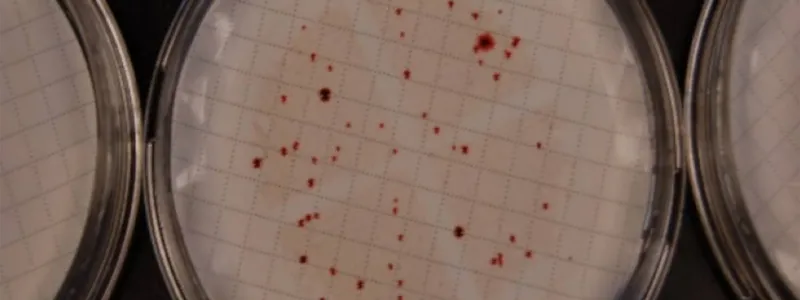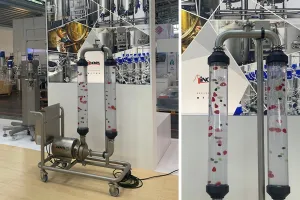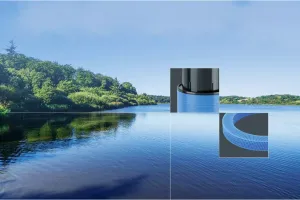
Is E. coli losing its reliability as a Fecal Indicator Bacteria?
Home /Is E. coli losing its reliability as a Fecal Indicator Bacteria?
Is E. coli losing its reliability as a Fecal Indicator Bacteria?
The past 50 years have seen vast changes in the way water has been recycled into our streams, creeks, rivers, estuaries, oceans and lakes. Wastewater treatment has been an essential requirement to maintain the safety and health of not only the environment, but also of the human population. As a result, every municipal and industrial wastewater discharger that emits some micro-pollutants in their effluent bears the responsibility of ensuring that levels of harmful substances are well within the prescribed range.
E. coli
This effluent discharge is monitored and regulated by the United States Environmental Protection Agency (EPA) under the National Pollutant Discharge Elimination System (NPDES). Set up in 1972 under the Clean Water Act, the NPDES is a permit program to regulate pollutant discharge to waters of the country1. Excluding Massachusetts, New Hampshire, New Mexico, District of Columbia, U.S. territories, and federal and tribal lands, the EPA has authorized states to issue their own NPDES permits as per EPA guidelines. Besides setting general limits on pollutant levels, the EPA has empowered local and state agencies to set their own thresholds based on the needs of the local environment.
Broadly, the EPA identifies the following five categories of pollutants2:
Oxygen-demanding substances, such as organic matter and ammonia;
Pathogens;
Nutrients;
Inorganic and Synthetic Organic Chemicals, such as those in detergents, pharmaceuticals, etc.; and
Thermal pollution, i.e. when discharged water is at a higher temperature than the receiving water.
When it comes to wastewater treatment, especially sewage treatment, the primary goal of disinfection is to remove contamination from bird, animal and human feces. To ensure that pathogenic bacteria, viruses and protozoans have been adequately removed from the treated wastewater, authorities rely on testing for the presence of certain bacteria found in the human and animal gut. Termed ‘Fecal Indicator Bacteria’ (FIB), or simply ‘Indicator organisms’, the presence of these bacteria beyond a threshold limit indicates that a host of disease-causing microorganisms exist in the water being tested. For decades, the test for safety of drinking water has relied purely on measuring the presence of fecal coliforms and fecal streptococci. However, this may soon change.
A study conducted in 2014 estimated that globally nearly 1.8 billion people suffered from fecal contamination in drinking water3. This can partly be attributed to faulty and insufficient disinfection of water; however, a bigger reason is the inadequacy of the existing FIB being tested. Until recently, testing for the presence of FIB in drinking water involved measuring the colony forming units per milliliter (cfu/mL) of total coliforms, fecal coliforms, and fecal streptococci bacteria. However, EPA now recommends additional testing specifically for Escherichia coli and Enterococcus bacteria to gauge drinking water safety4. Nevertheless, several issues still exist:
E. coli does not survive for long outside the gut, making its testing more reliable closer to the point or event of contamination;
Measuring E. coli colonies reliably is difficult because it is easily outnumbered by other fecal bacteria;
E. coli can be naturally found in non-contaminated samples depending on the weather conditions;
It is quite difficult to viably culture coliforms, resulting in false negative test results;
Enterococci are naturally found in soil and sediments, making it difficult to accurately interpret test results;
Major pathogens such as Giardia, Cryptosporidium, Vibrio cholerae and Salmonella are not captured by the current tests;
Low cost, ease and speed of testing are the primary reasons why authorities continue to rely on E. coli testing. Adding Enterococci testing to this mix greatly improves the accurate identification of fecal contamination in drinking water. The states of Texas and Maine have taken conscious steps in this regard and have chosen to use Enterococci testing as a reliable mechanism for gauging adequate disinfection of wastewater when it is discharged to the ocean or the Gulf of Mexico. As new molecular test technologies such as qPCR become increasingly mainstream, global standards may change soon leading to improved water safety and public health.
While we know that chlorine and other oxidants are effective in eliminating the bulk of the bacteria, ultraviolet light (UV) has been gaining favor and popularity. UV reduces human exposure to dangerous chemicals and the potential for accidental discharges that can kill fish, mammals, benthic macro-invertebrates and other sensitive water dwellers. The industry has evolved since the initial uses of chlorine, now we have demonstrated that other methods of disinfection can be of great value to eliminate these bad actors with material handling, mixing or storage issues
E. coli
This effluent discharge is monitored and regulated by the United States Environmental Protection Agency (EPA) under the National Pollutant Discharge Elimination System (NPDES). Set up in 1972 under the Clean Water Act, the NPDES is a permit program to regulate pollutant discharge to waters of the country1. Excluding Massachusetts, New Hampshire, New Mexico, District of Columbia, U.S. territories, and federal and tribal lands, the EPA has authorized states to issue their own NPDES permits as per EPA guidelines. Besides setting general limits on pollutant levels, the EPA has empowered local and state agencies to set their own thresholds based on the needs of the local environment.
Broadly, the EPA identifies the following five categories of pollutants2:
Oxygen-demanding substances, such as organic matter and ammonia;
Pathogens;
Nutrients;
Inorganic and Synthetic Organic Chemicals, such as those in detergents, pharmaceuticals, etc.; and
Thermal pollution, i.e. when discharged water is at a higher temperature than the receiving water.
When it comes to wastewater treatment, especially sewage treatment, the primary goal of disinfection is to remove contamination from bird, animal and human feces. To ensure that pathogenic bacteria, viruses and protozoans have been adequately removed from the treated wastewater, authorities rely on testing for the presence of certain bacteria found in the human and animal gut. Termed ‘Fecal Indicator Bacteria’ (FIB), or simply ‘Indicator organisms’, the presence of these bacteria beyond a threshold limit indicates that a host of disease-causing microorganisms exist in the water being tested. For decades, the test for safety of drinking water has relied purely on measuring the presence of fecal coliforms and fecal streptococci. However, this may soon change.
A study conducted in 2014 estimated that globally nearly 1.8 billion people suffered from fecal contamination in drinking water3. This can partly be attributed to faulty and insufficient disinfection of water; however, a bigger reason is the inadequacy of the existing FIB being tested. Until recently, testing for the presence of FIB in drinking water involved measuring the colony forming units per milliliter (cfu/mL) of total coliforms, fecal coliforms, and fecal streptococci bacteria. However, EPA now recommends additional testing specifically for Escherichia coli and Enterococcus bacteria to gauge drinking water safety4. Nevertheless, several issues still exist:
E. coli does not survive for long outside the gut, making its testing more reliable closer to the point or event of contamination;
Measuring E. coli colonies reliably is difficult because it is easily outnumbered by other fecal bacteria;
E. coli can be naturally found in non-contaminated samples depending on the weather conditions;
It is quite difficult to viably culture coliforms, resulting in false negative test results;
Enterococci are naturally found in soil and sediments, making it difficult to accurately interpret test results;
Major pathogens such as Giardia, Cryptosporidium, Vibrio cholerae and Salmonella are not captured by the current tests;
Low cost, ease and speed of testing are the primary reasons why authorities continue to rely on E. coli testing. Adding Enterococci testing to this mix greatly improves the accurate identification of fecal contamination in drinking water. The states of Texas and Maine have taken conscious steps in this regard and have chosen to use Enterococci testing as a reliable mechanism for gauging adequate disinfection of wastewater when it is discharged to the ocean or the Gulf of Mexico. As new molecular test technologies such as qPCR become increasingly mainstream, global standards may change soon leading to improved water safety and public health.
While we know that chlorine and other oxidants are effective in eliminating the bulk of the bacteria, ultraviolet light (UV) has been gaining favor and popularity. UV reduces human exposure to dangerous chemicals and the potential for accidental discharges that can kill fish, mammals, benthic macro-invertebrates and other sensitive water dwellers. The industry has evolved since the initial uses of chlorine, now we have demonstrated that other methods of disinfection can be of great value to eliminate these bad actors with material handling, mixing or storage issues





